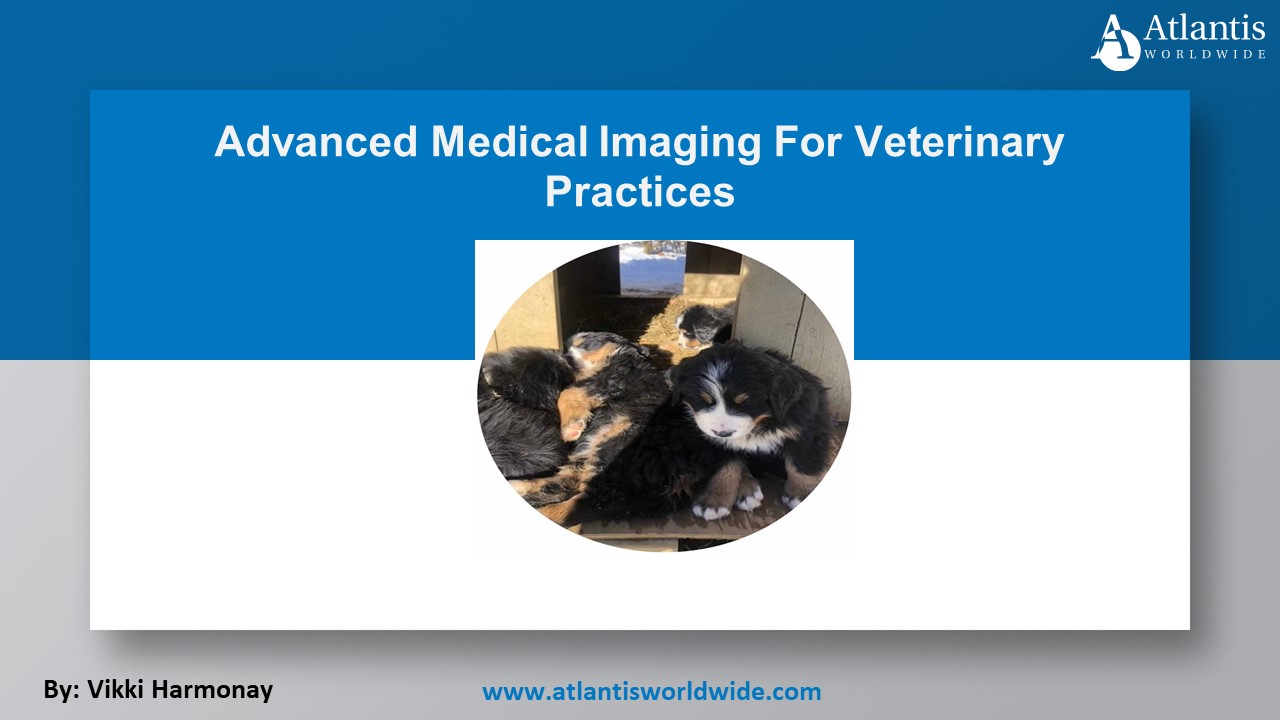Advanced Medical Imaging For Veterinary Practices - PowerPoint PPT Presentation
Title:
Advanced Medical Imaging For Veterinary Practices
Description:
CT and MRI have become available in veterinary medicine at relatively low cost. These medical imaging systems are often accessible with same-day imaging.. – PowerPoint PPT presentation
Number of Views:1
Title: Advanced Medical Imaging For Veterinary Practices
1
Advanced Medical Imaging For Veterinary Practices
www.atlantisworldwide.com
By Vikki Harmonay
2
In the past 20 years, CT and MRI have become
available in veterinary medicine at relatively
low costs. These are often accessible with
same-day imaging and board-certified radiologist
interpretation in many facilitiesmuch faster
than imaging for their human counterparts!
However, the availability of advanced imaging
does vary.
www.atlantisworldwide.com
3
Most of the time, imaging centers, universities
and specialty hospitals work together in order to
provide non-invasive, state-of-the-art imaging
for veterinary patients. But imaging centers in
some areas are competing with referral/specialty
hospitals and universities for business. In
veterinary medicine, advanced imaging has a
smaller role than in human studies because the
primary imaging modalities are radiographs and
ultrasound, rather than CT and MRI. This is
because of the availability, cost and
requirements for general anesthesia during
advanced imaging. But there are times MRI and CT
play an essential role. This is when the benefit
of a diagnostic yield outweighs the cost and
necessity for general anesthesia.
www.atlantisworldwide.com
4
There are some clinical areas that warrant
pursuit of advanced imaging in veterinary
medicine brain, nasal, spine, elbow imaging, and
pre-surgical evaluation before mass removal.
Brain Imaging For veterinary patients with head
tilt, seizure disorders, ear disease and
behavioral changes that may be due to tumors,
congenital brain abnormalities or infectious
lesions, brain imaging is recommended. Usually
its MRI, but in some situations CT can be used
and is much less expensive. CT imaging is usually
reserved for older, large breed dogs that are
predisposed to the development of neoplastic
brain lesions.
www.atlantisworldwide.com
5
Nasal Imaging Advanced imaging is called for with
patients who have nasal cavity disorders like
epistaxis and nasal discharge. Thoracic
radiographs for metastatic and pre-anesthetic
screening are the preferred type of imaging.
Nasal radiography requires general anesthesia and
a skilled technical staff.
Spine Imaging Veterinary patients with ataxia,
back pain or paraparesis are candidates for spine
imaging. MRI is usually recommended for spinal
imaging but CT with contrast medium can be a less
expensive alternative to identify or rule out
surgical spinal disorders like tumors and
intervertebral disk herniations.
www.atlantisworldwide.com
6
Elbow Imaging Advanced imaging is appropriate for
immature veterinary patients with chronic
lameness. It can also be used to rule out osseous
trauma and identify some of the lesions that are
associated with elbow dysplasia. CT is
recommended, but MRI can provide similar
information at an increased cost.
Pre-surgical Evaluation Before Mass Removal If a
pre-surgical evaluation of disease extent is
needed, prereferral imaging will vary depending
on the location of the mass. As a rule, thoracic
and survey radiographs are recommended for
metastatic screening and the initial evaluation
of the mass lesion. However, an abdominal
ultrasound might help rule out disseminated
disease in cases of hepatic masses.
www.atlantisworldwide.com
7
As a rule, CT in veterinarian medicine has been
static, since the need for general anesthesia
involves risk and/or artifact. However,
researchers at the University of Illinois used an
ultrafast 16-slice CT scanner, which allowed them
to image an entire patient in just a few seconds,
combined with a clear box called the VetMousetrap
for use with non-anesthetized patients. The speed
of the image acquisition allowed researchers to
image the veterinary patient without general
anesthesia and with minimal motion artifacts.
This new CT imaging technique can be used in lieu
of radiography and ultrasound. Also, the
technique is limited to cats and small to medium
dogs due to the size of the VetMousetrap.
www.atlantisworldwide.com
8
Talk To An Expert If youre interested in adding
medical imaging equipment to your veterinary
practice, or have questions, talk to the experts
at Atlantis Worldwide. Contact Us Today!
www.atlantisworldwide.com
9
https//info.atlantisworldwide.com/blog/advanced-m
edical-imaging-for-veterinary-practices
www.atlantisworldwide.com
10
- Contact Us
60 East 42nd Street, Suite 4600, New York, NY
10165 Phone 1-212-366-9100 Toll Free
1-800-533-3356 Fax 646-762-6562
info_at_atlantisworldwide.com https//www.atlantisw
orldwide.com https//info.atlantisworldwide.com/b
log































